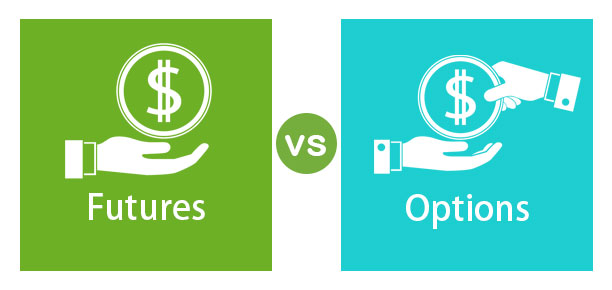Introduction
In the world of finance, there are various investment vehicles available to individuals seeking to grow their wealth. Two popular and versatile instruments are futures and options trading. These financial derivatives offer traders the opportunity to speculate on price movements of underlying assets without owning them outright. In this article, we will delve into the intricacies of futures and options trading, explaining their differences, benefits, and risks, to provide you with a comprehensive understanding of these trading strategies.
- Introduction
- What Are Futures Contracts?
- What Are Options Contracts?
- The Differences Between Futures and Options
- Factors Influencing Futures and Options Prices
- Strategies for Trading Futures
- Strategies for Trading Options
- Risk Management in Futures and Options Trading
- Trading Psychology and Discipline
- The Role of Clearinghouses and Exchanges
- Tax Implications of Futures and Options Trading
- Top Tips for Successful Futures and Options Trading
- Conclusion
- FAQs
What Are Futures Contracts?
1.1 Understanding Futures Trading
Futures contracts are standardized agreements between two parties to buy or sell an asset at a predetermined price on a specific date in the future. These contracts are traded on organized exchanges, providing liquidity and transparency to the market. Futures are commonly used for commodities, currencies, stock indices, and interest rates.
1.2 Key Terminologies in Futures Trading
- Contract Size: The quantity of the underlying asset covered by a single futures contract.
- Expiration Date: The date on which the contract expires, and the settlement takes place.
- Margin: The initial deposit required to initiate a futures position.
- Mark-to-Market: The process of adjusting account balances to reflect current market prices.
1.3 Advantages of Futures Trading
Futures trading offers several benefits, including:
- Leverage: Traders can control a larger position with a smaller upfront investment.
- Hedging: Futures allow businesses to protect against price fluctuations in raw materials.
- Liquidity: Due to active trading, futures contracts are generally more liquid than other assets.
- Speculation: Investors can profit from price movements without owning the underlying asset.
What Are Options Contracts?
2.1 Understanding Options Trading
Options contracts provide the buyer with the right, but not the obligation, to buy (call option) or sell (put option) an underlying asset at a specific price on or before the expiration date. Options are versatile instruments used for hedging, income generation, and speculation.
2.2 Key Terminologies in Options Trading
- Strike Price: The predetermined price at which the asset can be bought or sold.
- Premium: The price paid for the option contract.
- In-the-Money: An option that has intrinsic value.
- Time Decay: The reduction of an option’s value as it approaches expiration.
2.3 Advantages of Options Trading
Options trading offers several advantages, including:
- Flexibility: Options allow for a wide range of trading strategies and risk profiles.
- Limited Risk: The maximum loss is limited to the premium paid for the option.
- Income Generation: Writing options can provide traders with additional income.
- Risk Management: Options can be used to protect a portfolio against adverse price movements.
Additional Read: A Comprehensive Guide to Understanding Futures and Options
The Differences Between Futures and Options

3.1 Risk and Reward Profiles
Futures and options have different risk and reward profiles. While futures offer unlimited profit potential and losses, options limit the loss to the premium paid while allowing unlimited profit potential.
3.2 Obligations and Flexibility
Futures traders are obligated to fulfill the terms of the contract at expiration, whereas options traders have the flexibility to choose whether to exercise the contract or not.
3.3 Liquidity and Market Accessibility
Futures markets tend to be more liquid and accessible due to standardized contracts and exchange trading. Options, on the other hand, may have lower liquidity for certain assets and strikes.
Factors Influencing Futures and Options Prices
4.1 Underlying Asset Price
The price movement of the underlying asset significantly affects the value of futures and options contracts.
4.2 Time to Expiry
As the expiration date approaches, the value of an option may decrease due to time decay.
4.3 Volatility of the Underlying Asset
Higher volatility generally increases the value of both futures and options contracts.
Strategies for Trading Futures
5.1 Speculation and Hedging
Traders can speculate on the price direction of an asset or use futures to hedge against price fluctuations.
5.2 Long and Short Positions
Going long on a futures contract involves buying, with the expectation of price appreciation, while going short involves selling, anticipating price decline.
5.3 Margin and Leverage
Futures trading involves leverage, allowing traders to control larger positions with a smaller margin deposit.
Strategies for Trading Options
6.1 Call and Put Options
Call options are used to profit from upward price movements, while put options are used to profit from downward price movements.
6.2 Covered Calls and Protective Puts
Investors can use covered calls to generate income and protective puts to safeguard against losses.
6.3 Straddles and Strangles
Straddles involve buying both a call and a put option simultaneously, while strangles involve buying out-of-the-money call and put options.
Risk Management in Futures and Options Trading
7.1 Setting Stop-Loss and Take-Profit Levels
Implementing stop-loss and take-profit levels can help manage risk and secure profits.
7.2 Diversification of Portfolios
Diversifying investments can reduce the impact of losses from individual trades.
7.3 Understanding and Managing Margin Calls
Margin calls can occur when account balances fall below required levels, requiring additional funds to maintain positions.
Trading Psychology and Discipline
8.1 Emotions and Decision Making
Emotional discipline is crucial to avoid impulsive and irrational trading decisions.
8.2 Staying Calm in Volatile Markets
Remaining composed during market turbulence is essential for making sound trading choices.
8.3 The Importance of Having a Trading Plan
Having a well-defined trading plan helps maintain consistency and focus in trading activities.
The Role of Clearinghouses and Exchanges
9.1 Clearing and Settlement Processes
Clearinghouses ensure the integrity and efficiency of the trading process by acting as intermediaries between buyers and sellers.
9.2 Regulatory Oversight
Exchanges and clearinghouses are subject to regulatory supervision to maintain market fairness and safety.
9.3 Ensuring Market Integrity and Fairness
Regulations and surveillance systems are in place to prevent market manipulation and fraud.
Tax Implications of Futures and Options Trading
10.1 Tax Treatment of Gains and Losses
Gains and losses from futures and options trading may be subject to specific tax treatments.
10.2 Reporting Requirements
Traders must comply with tax reporting obligations related to their trading activities.
Top Tips for Successful Futures and Options Trading
11.1 Continuous Learning and Research
Keeping abreast of market trends and continuously improving trading knowledge is vital.
11.2 Start Small and Gradually Increase Exposure
New traders should begin with smaller positions and gradually increase their exposure as they gain experience.
11.3 Monitoring and Adapting to Market Trends
Constantly monitoring market movements and adapting strategies to changing conditions can enhance trading success.
Conclusion
Futures and options trading provide traders with diverse strategies to capitalize on market movements without owning the underlying assets. While futures offer higher risk and reward potential, options provide greater flexibility and risk management capabilities. Successful trading in these financial derivatives requires a combination of knowledge, discipline, and risk management. By understanding the nuances of futures and options trading, individuals can make informed decisions to achieve their financial goals.
FAQs
- What is the main difference between futures and options?
Futures obligate traders to fulfill the contract, while options offer the choice to buy or sell.
- Are futures and options suitable for beginners?
Both can be suitable for beginners, but thorough education and practice are crucial before starting.
- How can I minimize risks in futures and options trading?
Risk can be mitigated through diversification, setting stop-loss levels, and proper risk management.
- Can I trade futures and options with a small budget?
Yes, with proper risk management, traders can start with a small budget.
- Do I need a broker to trade futures and options?
Yes, trading futures and options typically requires a brokerage account to access the markets.


